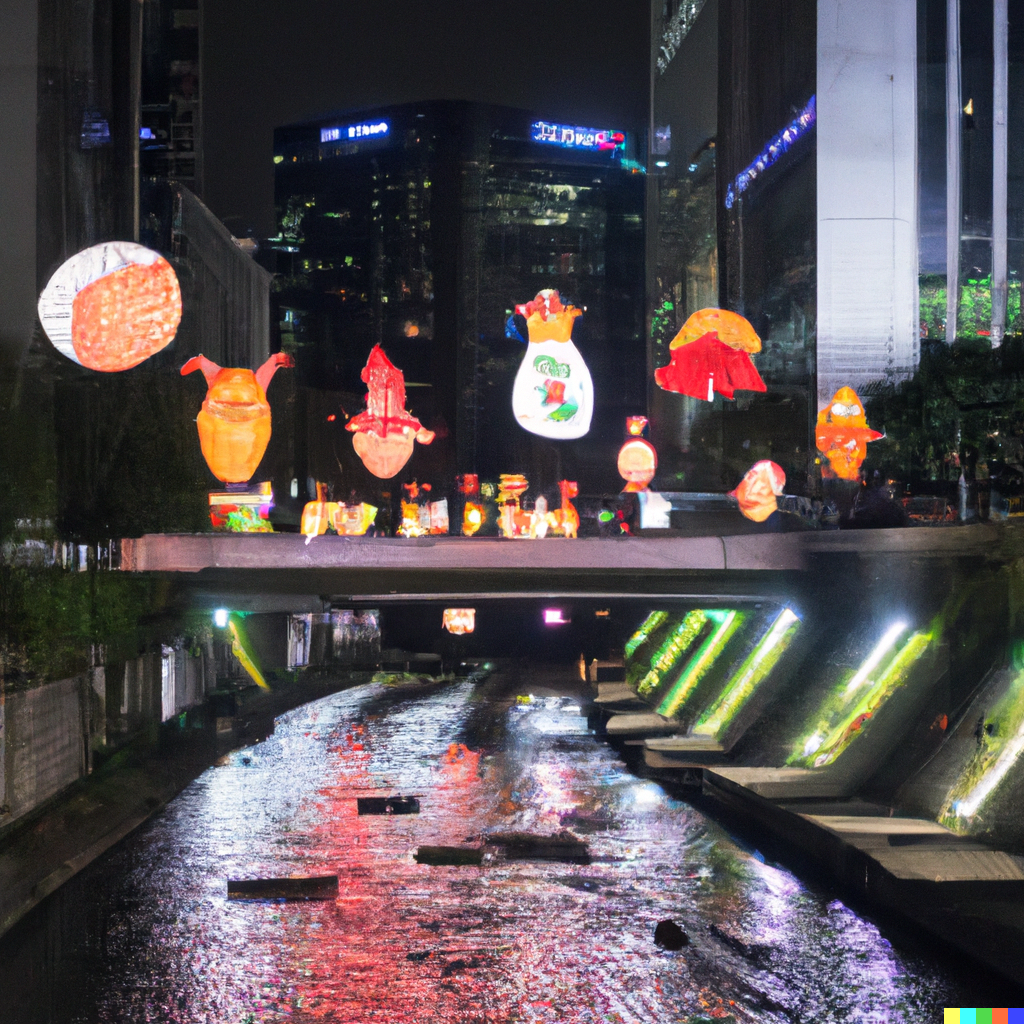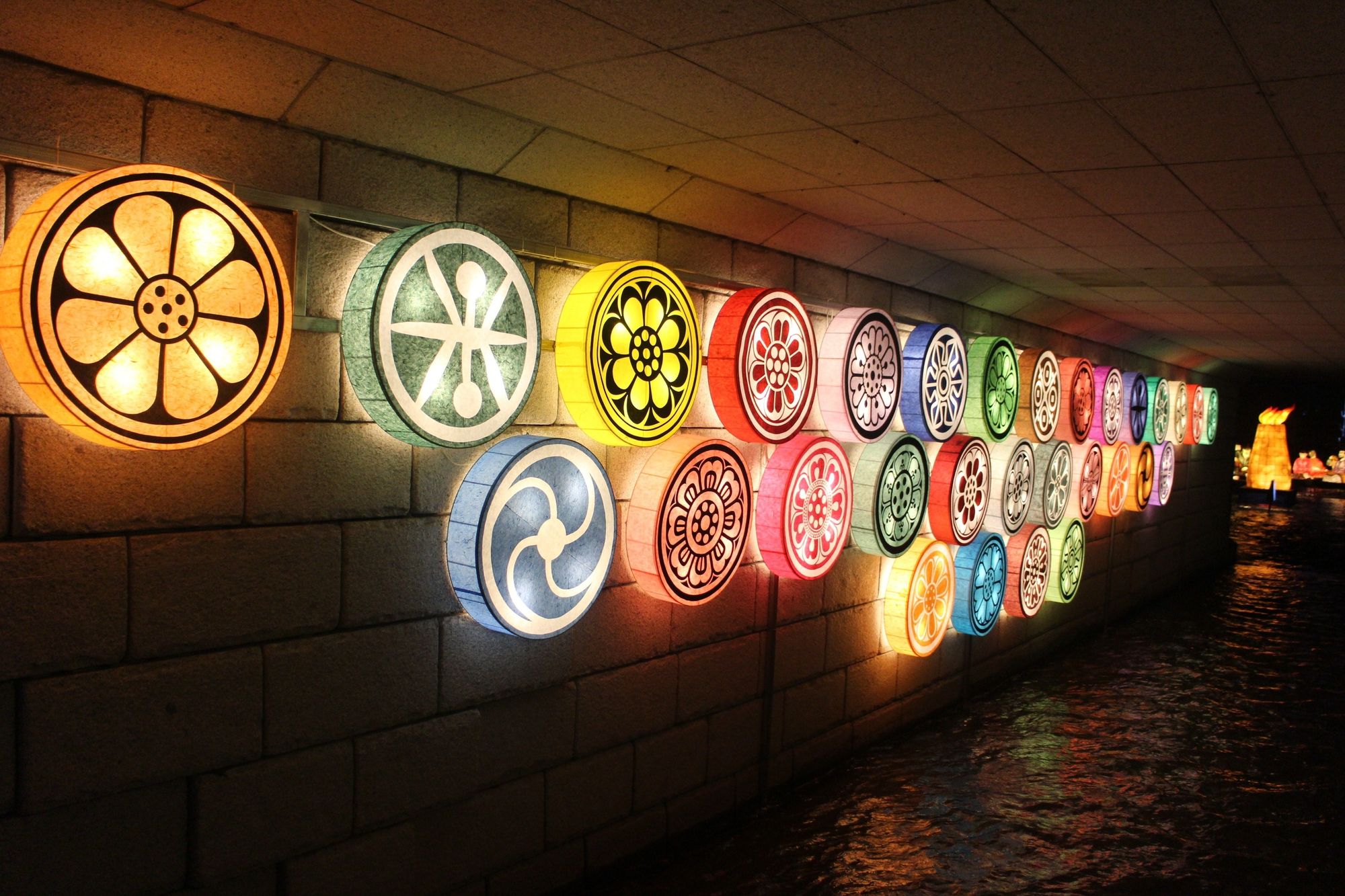The Revival of Cheonggyecheon Stream
Nestled within the bustling metropolis of Seoul, Cheonggyecheon Stream has a captivating history that reflects the transformation of urban landscapes. Before its remarkable renovation, the stream was a far cry from its current allure, languishing under layers of neglect and disregard.
In the pre-renovation era, Cheonggyecheon Stream was an unappealing sight, burdened with pollution and concealed beneath a web of elevated highways. Murky waters, trash-filled banks, and an absence of greenery left little room for appreciation. It was a grim reminder of the consequences of neglecting natural resources in favor of urban development.
However, a visionary leader would soon emerge to change the course of Cheonggyecheon's fate. Mayor Lee Myung-bak, armed with a grand vision and determination, embarked on an ambitious urban renewal project that aimed to revive the stream's lost grandeur.
The renovation was an arduous task that demanded the removal of elevated highways and meticulous restoration of the stream's original flow. Doubts arose about the feasibility and practicality of the project, but Mayor Lee remained steadfast, advocating for a greener and more sustainable Seoul.
After years of dedication and extensive work, Cheonggyecheon Stream emerged as a breathtaking oasis amidst the city's hustle and bustle. Its waters, once murky and contaminated, were now pristine and alive with vitality. The restored natural habitat attracted various flora and fauna, making it a sanctuary for wildlife within the urban landscape.
The urban revitalization breathed new life into the surrounding district, which was once neglected. Pedestrian-friendly walkways and charming bridges lined the stream, encouraging leisurely strolls and fostering a sense of community engagement. The rejuvenated area became a magnet for social gatherings, cultural events, and festivities, transforming it into a vibrant and thriving hub.
Local businesses flourished as the district gained popularity among both locals and tourists. Trendy cafes, restaurants, and shops sprouted along the stream's banks, offering a unique and pleasant experience for visitors. The transformation of Cheonggyecheon Stream created a domino effect, leading to the rise of sustainable development initiatives across the city.
Beyond the immediate benefits, the restoration of Cheonggyecheon Stream became a symbol of Seoul's commitment to environmental consciousness. It showcased the city's dedication to preserving its natural heritage while progressing as a modern urban center. The project inspired other cities worldwide to reconsider their urban planning approaches, sparking a global interest in greener, more sustainable living spaces.
Since the restoration of Cheonggyecheon Stream, the surrounding district has witnessed a surge in new and innovative architectural developments. Some prominent examples include:
- The Riverside Plaza: This modern complex features a mix of commercial and recreational spaces, offering visitors a chance to shop, dine, and enjoy scenic views of the stream. Its contemporary design seamlessly blends with the natural beauty of Cheonggyecheon, attracting both locals and tourists alike.
- The Cultural Center: Nestled on the banks of the stream, the Cultural Center has become a focal point for arts and entertainment. Its striking architecture, featuring a blend of traditional Korean elements and modern aesthetics, houses theaters, galleries, and exhibition halls that showcase the rich cultural heritage of Korea.
- The Eco-Friendly Hotel: In line with the city's commitment to sustainability, an eco-friendly hotel has been established in the vicinity. This environmentally conscious accommodation not only provides tourists with a comfortable stay but also educates them about green practices and the importance of preserving natural resources.
- The Riverside Park: A sprawling park along the stream's banks serves as a green oasis in the heart of the city. The park boasts contemporary landscape design, with walking paths, seating areas, and recreational facilities, making it an ideal spot for families, fitness enthusiasts, and nature lovers to unwind amidst the urban landscape.
With the revival of Cheonggyecheon Stream and the development of these modern buildings, tourists from all corners of the globe now flock to this once-overlooked district of Seoul. The area has earned a reputation as a must-visit destination for both locals and international travelers, contributing significantly to the city's tourism industry.
Tourists are drawn to Cheonggyecheon's allure as they stroll along the stream's banks, basking in its serene ambiance. The restoration of the stream has also given rise to various cultural events and festivals that celebrate Seoul's heritage and foster a sense of community.
The Lantern Festival: One of the most significant events held at Cheonggyecheon Stream is the annual Lantern Festival. This event holds immense cultural importance and is celebrated with grandeur. During the festival, hundreds of beautifully crafted lanterns illuminate the stream, transforming it into a mesmerizing display of colors and shapes.

The Lantern Festival is a tribute to Korea's traditional lantern culture, which has deep historical roots. The festival coincides with important holidays like Buddha's Birthday and the Korean Thanksgiving, Chuseok. These intricately designed lanterns depict various themes, symbolizing peace, prosperity, and harmony.
Beyond its cultural significance, the Lantern Festival has become a major draw for tourists. Visitors from around the world gather at Cheonggyecheon to witness this captivating spectacle, immersing themselves in the beauty of Korean traditions while experiencing the vibrant atmosphere of the city.
In Korea, the theme of flowing water holds deep cultural and symbolic significance, making Cheonggyecheon Stream's revival even more meaningful. Water has been a central element in Korean art, meditation, and various aspects of life for centuries, reflecting the country's close relationship with nature and its rich cultural heritage.
Symbolism in Korean Art:
In traditional Korean art, water is often depicted as a source of life, purity, and renewal. Paintings, known as "suseokhwa," often feature serene landscapes with flowing streams, waterfalls, or tranquil ponds. These artworks aim to capture the essence of nature's beauty and inspire a sense of calm and tranquility. The rhythmic flow of water in such paintings is believed to bring harmony and balance to the viewer's mind, creating a connection with the natural world.
Water in Meditation and Healing:
In Korean culture, the sound of flowing water is considered therapeutic and meditative. It is believed to have the power to soothe the soul, relieve stress, and promote mental clarity. In traditional Korean medicine, the sound of water is also used as a healing element to restore balance and alleviate emotional disturbances.
Urban Planning and the Meaning of Cheonggyecheon:
In the context of urban planning, the revival of Cheonggyecheon Stream carries a profound message. By restoring the stream, the city of Seoul has embraced the significance of flowing water as a symbol of life and renewal. The stream serves as a reminder of the city's connection to nature and the importance of preserving and cherishing its natural resources.
Beyond its aesthetic appeal, Cheonggyecheon Stream has become a prominent gathering place for locals and tourists seeking moments of contemplation and connection with nature amidst the urban landscape. The gentle flow of water, accompanied by the soothing sounds of its movement, fosters a sense of calmness and inner peace amid the bustling city.

Cultural Heritage and Identity:
Cheonggyecheon Stream also serves as a celebration of Korea's cultural heritage and identity. By embracing the flowing water element in the heart of Seoul, the city pays homage to its traditional values and its deep-rooted connection with nature. The stream acts as a bridge between the past and the present, symbolizing the harmonious coexistence of tradition and modernity.
The revival of Cheonggyecheon Stream stands as a testament to the power of visionary leadership and community-driven initiatives. From its humble past, the stream has blossomed into a gem that embodies the harmonious coexistence of nature and urban life. As visitors stroll along its banks, they witness not only the beauty of the stream but also the transformative potential inherent in our cities when we prioritize environmental preservation and sustainable development.

